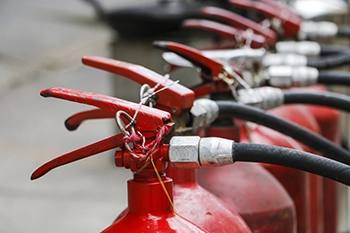Managing property comes with many responsibilities, and one of the most important is fire safety. For landlords, particularly those letting houses in multiple occupation (HMOs), compliance is not only a legal duty but also a vital part of protecting tenants and property. Yet, common mistakes are made time and again, often leading to enforcement action, fines, or in the worst cases, serious incidents.
This guide highlights the most frequent fire safety errors landlords make, explains why they matter, and offers practical steps to avoid them. By understanding and addressing these issues, landlords can create safer living environments and meet their compliance obligations.
One of the most significant mistakes landlords make is failing to arrange a professional fire risk assessment. This assessment is a legal requirement under the Fire Safety Order 2005 and is the foundation of all compliance measures. Without it, landlords cannot be certain that their property meets the necessary safety standards.
A fire risk assessment identifies hazards, evaluates the risks, and provides clear recommendations for improvements. Failing to carry one out puts tenants at risk and can leave landlords exposed to legal action.
Installing smoke alarms, emergency lighting, and extinguishers is only part of the job. Regular maintenance is essential to ensure these systems work when needed. A common mistake is assuming that once installed, equipment can be left without ongoing checks.
Fire alarms should be tested weekly, emergency lighting must be maintained, and extinguishers require servicing. Landlords who neglect these duties may find their equipment fails during an inspection or worse, in a real emergency.
Another frequent issue is poor attention to fire doors and escape routes. Fire doors are designed to hold back flames and smoke, giving tenants time to escape. However, they only work if properly installed and maintained.
Common errors include:
During a fire safety inspection, these issues are often flagged as serious breaches. Landlords should ensure fire doors close properly, escape routes are clear, and tenants are informed about the importance of keeping exits accessible.
In HMOs, it is not enough to install systems and hope tenants will know what to do. Staff or managing agents should receive fire safety training so they can respond effectively during emergencies. Landlords often overlook this duty, assuming tenants alone must take responsibility.
Providing training ensures those managing the property can test alarms, organise evacuation drills, and deal with hazards. It also reassures tenants that safety is taken seriously.
Electrical faults are one of the leading causes of fires in rental properties. Landlords sometimes focus only on smoke alarms and fire exits, forgetting that overloaded circuits, faulty wiring, or neglected appliances pose a serious risk.
Regular electrical safety checks are required, and in HMOs, portable appliances should also be tested. By keeping up to date with electrical compliance, landlords reduce the chance of avoidable fires and strengthen overall fire safety.
Tenants need to know how to respond in the event of a fire, but many landlords fail to provide clear guidance. Without instruction, tenants may panic or make dangerous choices, such as trying to fight the fire instead of evacuating.
Landlords should provide simple, accessible fire safety information at the start of each tenancy. This includes showing tenants escape routes, explaining alarm systems, and advising against unsafe practices such as blocking fire doors.
When inspections take place, landlords are often asked for evidence of maintenance, testing, and training. A common mistake is failing to keep accurate records. Even if checks are carried out, without records, there is no proof of compliance.
Keeping logs of alarm tests, equipment servicing, and training sessions not only satisfies inspectors but also protects landlords if an incident occurs. Records demonstrate that fire safety has been managed responsibly.
Fire safety is not a one-off task. Properties change, tenants come and go, and risks evolve. A mistake many landlords make is failing to review fire safety arrangements regularly.
A fire risk assessment should be revisited when there are changes to the property or its use, and inspections should be scheduled at appropriate intervals. By reviewing fire safety regularly, landlords can catch issues early and maintain compliance.
Avoiding fire safety mistakes is about being proactive and consistent. The following steps can help:
By following these steps, landlords can reduce risks, protect tenants, and meet their legal obligations.
Fire safety is not an area where shortcuts can be taken. Mistakes not only put tenants in danger but can also result in significant penalties for landlords. By recognising the most common errors and taking steps to avoid them, landlords can create safer properties and demonstrate compliance.
Working with experts through fire risk assessments and regular fire safety inspections ensures that nothing is left to chance. For landlords committed to protecting their tenants and meeting their duties, avoiding these mistakes is the first step towards stronger, safer property management.

The Complete Fire Extinguisher Maintenance Guide for Landlords, HMO Owners, and Businesses Fire extinguishers save lives - but only if they are properly maintained. Whether...

Understanding Fire Safety at Home Fire safety isn’t just a concern for landlords and business owners. Every home, whether rented or privately owned, needs the...